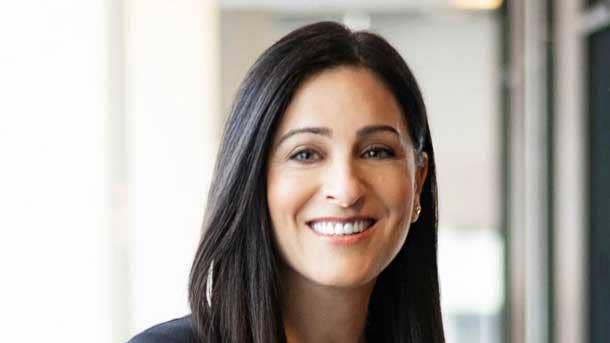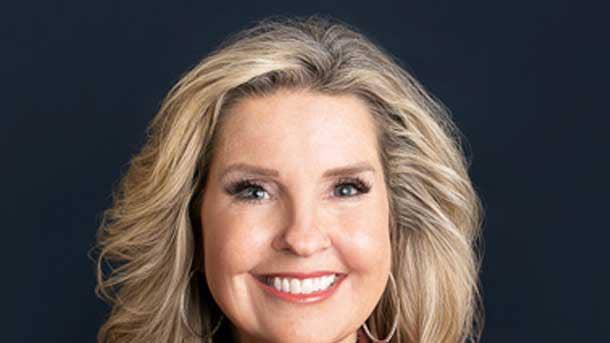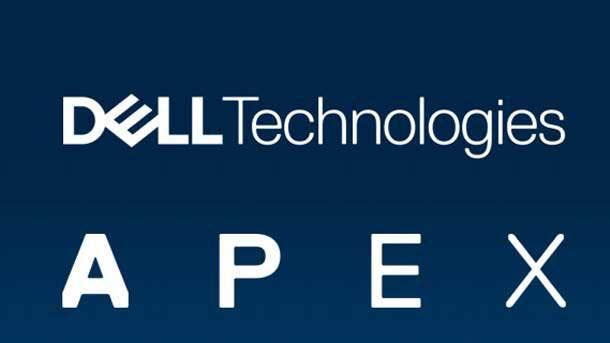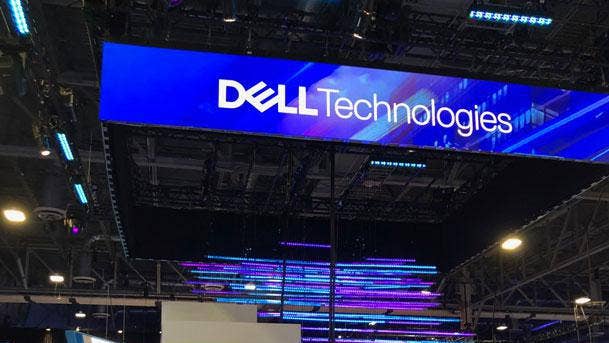Why Dell’s $59B Channel Business Is ‘On Fire:’ Rola Dagher
Dell Technologies’ global channel leaders talk to CRN about the channel business spiking 27 percent, adding more partners to Dell’s Partner Advisory Board and the company’s new channel-dedicated Dell Apex team.

Dell Leaders On Partner Growth, New Apex Team And Partner Advisory Board Changes
Dell Technologies’ global channel partner business climbed 27 percent in fiscal year 2022 with huge revenue growth in client systems and servers, while Dell also increased channel rebate payouts by 25 percent, according to Dell’s worldwide channel leader, Rola Dagher.
“In fiscal year 2022, partners brought us $59 billion in order revenue. Let me repeat: That’s $59 billion,” said Dagher, Dell’s global channel chief, in an interview with CRN. “We’re growing faster than the market, and our channel business is our fastest route to market. Our partners are on fire. They’re helping us solve customers’ most complex problems and capitalize on the opportunity we see ahead, which is $1.3 trillion.”
For Dell’s fiscal year 2022, which ended Jan. 28, 2022, the Round Rock, Texas-based technology giant generated record-breaking total revenue of $101 billion, an increase of 17 percent annually.
“We owe our incredible year to our partners,” said Dagher. “In our new fiscal year, we’re keeping our foot on the gas. We’re accelerating the momentum by continuing to invest in the channel.”
Dagher and Dell Senior Vice President of Global Partner Marketing Cheryl Cook talk to CRN about channel partner market growth numbers, adding more solution providers to Dell’s Partner Advisory Board in North America and the company’s new channel-focused Dell Apex team.

Just how much did Dell’s channel grow in fiscal year 2022 and in your fourth quarter?
Dagher (pictured): We owe our incredible year to our partners. We are beyond grateful to all of our partners for this awesome successful year full of innovation, creativity, flexibility and great results. I tell you, it’s amazing to be in the channel business at Dell Technologies. We’re growing faster than the market, and our channel business is our fastest route to market. Our partners are on fire. They’re helping us solve customers’ most complex problems and capitalize on the opportunity we see ahead, which is $1.3 trillion.
In fiscal year 2022, partners brought us $59 billion in order revenue. Let me repeat: That’s $59 billion. So we’re grateful to have the industry partner ecosystem by our side. Our strong channel results have had a major impact on the business overall.
[Regarding] our FY22 growth that we’ve seen: Global channel grew 27 percent year over year. Distribution grew 33 percent year over year. Our client business grew 39 percent year over year. Our server business grew 33 percent. Our storage business grew 7 percent, and rebate payouts grew 25 percent year over year.
Looking at our fourth quarter, order revenue through the channel globally was up 19 percent. Our client solution business was up 20 percent. Our server business was up 38 percent. Our storage order was up 8 percent. Our VMware orders through the channel were up 4 percent quarter over quarter. Then also our rebate payouts grew 17 percent. So outstanding.
In our new fiscal year, we’re keeping our foot on the gas. We’re accelerating the momentum by continuing to invest in the channel. The foundation of those investments are people. We start with people, and everything is all about people and culture. Our world-class channel team continues to thrive and grow.

Can Dell’s channel continue this type of growth in fiscal year 2023?
Cook (pictured): Yes. So for some time now, we’ve been really pushing our partners to cross-sell and upsell with the breadth of our portfolio. I think that’s just starting to ring true. So we have strong evidence that partners that sell three lines of business—our client, our servers, our storage—they grow 31 times faster than partners that only sell a single line of business.
What is actually happening is the opportunity is being realized by our partners. And it’s not just that the growth is a premium—it certainly is driving the performance that we’re describing—but it actually enables our partners to engage in richer, stickier, more complex opportunities with their customers.
Partners are playing a much more strategic role as a trusted adviser when they’re really leaning into the portfolio. They’re not just transacting. They’re not just [selling] in a single line of business. I think that is a little bit underlying some of the continued results we’ve been seeing.
Because if you look at the momentum we’ve been seeing for several quarters, certainly the results we just had in Q4 of this year are remarkable, but I think that is a big reason underneath it.
Dagher: Our Partner Program launched in terms of what we’re accelerating: We look at the storage accelerator and we’re adding a 2 percent kicker for storage, we’re adding a five-times accelerator, we are also adding client and peripherals, we’re adding the NBI [New Business Incentive] and then we’ve opened up VMware for all medal tiers.
So the question you asked around ‘Will this momentum continue?’ Absolutely. We’re hoping for the same or better [in fiscal year 2023].
As we continue to invest in our partners, we’re seeing that they’re doing the same. We’re investing in them, but they’re also investing back in us because they believe in the programs that we have and the strategy.

Can you talk about creating a new channel-focused Dell Apex team?
Dagher: We’ve introduced a channel Apex cross-functional team whose primary focus is on the partners.
That’s also under the leadership of Lukas Bedi [Dell’s new vice president of channel strategy and VMware channel sales], Darren Sullivan [senior vice president of global partner operations] and Driss El Ougmani [vice president of sales for global channels, alliances and OEM]. They’ve actually hired a brand-new team to focus just on Apex, and we’re collaborating and aligning across the board.
When we launched Apex last year, we were still actually building it into the channel. We didn’t have a dedicated team. So now we’re investing more in the channel and the Apex team.
So what we did is we actually invested in putting dedicated resources into Apex to help accelerate Apex in the channel through our partners. So that’s a newly formed team.
Cook: This team will continue to work on forward-looking offers that are going to come out. We’ve made a commitment that we’re going to make available all of our portfolio to be consumed in a subscription, as-a-service way.
So this team will be a dedicated team that [addresses] the needs, the voice of the partner, how to optimize the partner opportunity and empowers partners in future Apex offers too.

When does Dell plan to have its entire portfolio available as a service? Is there any rough time frame, like by the end of 2023, when partners will be able to sell everything as a service?
Cook: Actually, there’s a considerable amount of our portfolio available through our custom Apex offers today. So it covers a pretty good breadth in global availability as well.
So I don’t think we’ve put a stake in the ground that says, ‘We must [do it by a certain time].’ But there’s considerable effort in each of our business units for future offers. You can see the way with which we’ve been adding Apex availability over time. We brought our first Apex offers out around Dell Tech World a year ago. Then every quarter, we’re continuing to bring new offers out. So it’ll continue to be a drumbeat. But no definitive timeline that I’m aware of.
Dagher: We continue to look forward in terms of what do we need to do for our partners, for our customers—whether it’s PC as a service, storage as a service, server as a service—it’s all of the above. So that is the goal in terms of where we’re heading. I’d love to give you an exact time frame, but the conversation continues to focus on the right time, for the right reasons and for all of our partners.

Any new changes to Dell’s channel strategy in North America?
Dagher: We’re increasing the companies that represent the North American Partner Advisory Board by over one-third, which is awesome.
We have solid representation across the tier levels when we talk about the partner types and the verticals to provide that diverse perspective across the board. The Partner Advisory Board [PAB] members are committed to two years for us, which is always great because we need their support and help in terms of what we need to be on the journey of innovation, changes, partner experience—all of that.
We consider our PAB members to be an extension of our team. I tell you, the best thing with the PAB is just to continue to listen to all of our partners on a monthly, quarterly basis. We’ll get to see them soon, face to face, in the next few weeks. We’re so excited to continue to learn about them.
Why did you increase your Partner Advisory Board?
Dagher: It’s all about learning from our partners, right? So this year, we’ve increased the number of companies that represents the advisory board by over a third.
It’s because we continue to learn from our partners that, ‘Here’s what we need to work with you on innovation, on flexibility, on customer experience, etc.’ all of that. So that’s why we continue to increase our PAB because it’s all about partner experience for us. And that’s the best way to learn, to actually be what we need to be for our partners. It’s [about having] those diverse leaders at the table to help us learn and continue to innovate.

Can you talk about Dell’s distribution strategy this year? Is that changing at all as distributors themselves are investing in their own marketplaces?
Dagher: Our distribution partners are so important to us. They are actually the engine of everything that we do. We are continuing to invest in our distributors.
When we look at anything new that we launched, we want to make sure that distribution is part of it—be it Apex or any of these programs, we’re pushing to ensure that our distributors are part of everything that we do. So we’re not stopping, we’re accelerating. We continue to invest in our distribution channel because they are the engine for us of growth when it comes to our partners.
Specifically, if you look at our international business, the amount of business that goes through distribution is amazing. So for us, we just invested even more on that side and we’re adding new people and new assets on the distribution side.
Cook: They’ve actually been a really pivotal part of our growth and acquisition strategy. We talk often about new customers, new buyers and our overall buyer health and partner health—they help us with nurturing and acquiring new partners into the Dell portfolio.
They also help us in promoting and growing partners that can get medal-tiered status. So they’re a pretty pivotal part of the growth that we’ve been driving, not just in the revenue, but in the enablement, the training and the nurturing of new partners to the program, and also promoting and growing the partners up into their tier status. They are strategically helping us get reach.

What are your bullish thoughts on Dell’s future this year?
Cook: After two years of working virtual and remote, I look at the phenomenal achievements we’ve been able to deliver in pretty unusual circumstances. We’re going to gather again at Dell Technologies World, in person, in Las Vegas the first week in May. We’re excited to host our partners there.
It was a remarkable fiscal year 2022. We made $101.2 billion in revenue, which is just pretty remarkable. The business grew 17 percent, which for a company our size and scale is certainly nothing to sneeze at for sure. The partners play a critical and pivotal part in delivering those results.
We launched our Partner Program in February, which is all aimed at continuing to simplify the overall framework of the program. Our cloud service providers are now earning lucrative rebates and MDF in that new simplified program. Our solution providers and distributors, like you might expect with this kind of performance and results, are earning more rebates than ever. … The way we’ve simplified and streamlined [the program] into a single track—we’re really just trying to be more relevant in recognizing that partners are now participating in multiple ways and in multiple business models.
We’re just looking forward to continuing the momentum [in fiscal year 2023]. We want to absolutely be the best partner for our partners in good times and in bad.